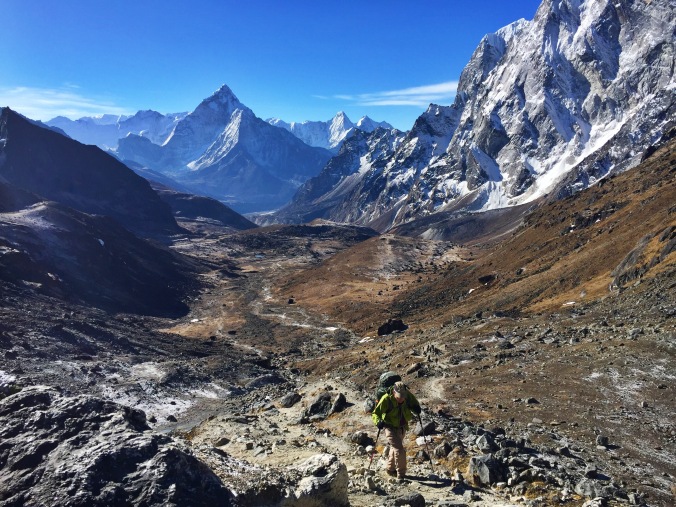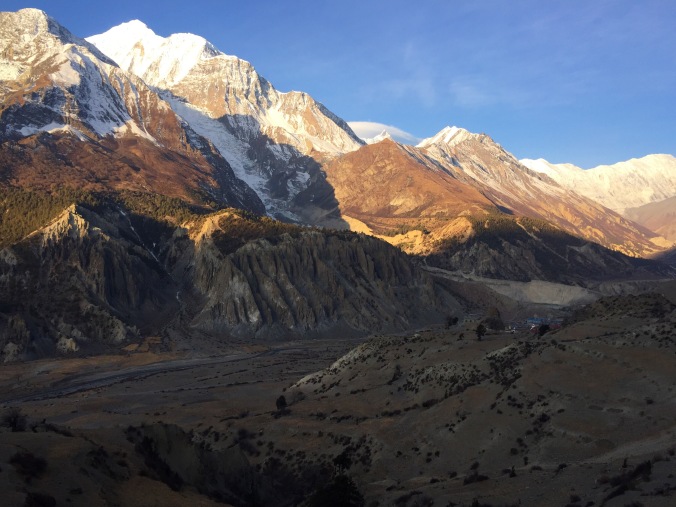As seen on The Outbound Collective.
High altitude hiking is one of the most challenging and rewarding outdoor activities that you need to add to your summer adventure list right now. From the Rocky Mountains to the Sierras, to international treks up Kilimanjaro and in Nepal, hiking at high altitude gives you a unique and unforgettable look at some of the most desolate places in the world.
Like any extreme adventure, while you’re picking out the perfect camera to bring and dreaming of your quintessential summit sunrise, you’ll need to prepare accordingly and remember these tips for a successful high altitude hike.
The truth is, there’s no real way to train for high altitude other than being there yourself. So above all else, make sure you have the chance to acclimate, hydrate, and prepare for the time of your life.
1) Understand the risks of high-altitude hiking
Do some general research on the differences between Acute Mountain Sickness (AMS), High Altitude Pulmonary Edema (HAPE), and High Altitude Cerebral Edema (HACE). Understand what a “sick person” at altitude looks like, and be prepared to take action if you or members of your team experience these symptoms.
- AMS is the most mild form of altitude sickness and unfortunately feels very similar to a hangover. You may experience a headache, nausea, or feel exhausted… If you notice any of these symptoms, heed warning that they could predict a larger risk to HAPE or HACE.
- HAPE occurs when liquid seeps into your lungs, and feels like you just had the wind knocked out of you. You may also cough up a frothy foam, which means it’s time to turn around and descend as quickly as possible.
- HACE causes confusion and incoordination. If your speech is slurring and you find yourself stumbling, you are close to death and an immediate descent is imperative.
2) Fitness is key
Do your training hikes with a weighted pack. 40 lbs. at sea level is going to feel a lot heavier (try double) once you venture above 10,000 feet. You’ll be giving yourself a break in the long run if you stuff your backpack with water, weights, or other heavy objects when you train at home.
Run stairs and hills. The calf-burners and glute-tearers you feel when hiking and running work completely different muscle groups. Switch up your workouts by adding as much elevation as you can. Training in San Francisco? Do sprints up steep hills or staircases. Stuck in a flat desert with no uphill training ground? Hit the gym and spend some time on the stairmaster. No matter where you are, there’s no excuse to not having the right physical preparation.
Get as high as possible beforehand. If you have easy access to a mountain range, slowly build your body up to higher elevations, gaining 1,000 ft. each training weekend. Starting small is also fine, too – doing aerobic exercises above 3,000 ft. will still adjust your body to working with less oxygen in your blood.
3) Fuel yourself
It may be difficult to remind yourself, but you’ll need to be prepared to eat and drink more than usual at high altitude. Your muscles are burning energy more quickly, and your body will need more calories and H2O to properly function. This is no environment for diets: Load your pack up with sugar and carbohydrate-loaded snacks like jerky, chocolate, hard candies, and other high-calorie treats.
4) Prepare to brave the elements
Naturally prone to sunburns? Then don’t skimp on the SPF when you’re at high altitude. Sunshine, wind, and temperature reach their extremes up high. Bring the right gear and prepare to pack total face protection from the sun, wind-resistant and waterproof clothing, and extra hand warmers, thermal gloves, and wool socks to guard your body against the inhospitable mountain environment.
5) Bring first aid backups
It’s impossible to predict how your body will be affected by high altitude before you go. If it’s your first time ascending thousands of vertical feet, play it safe and carry along an altitude aid. One of the most popular altitude medications, Diamox, is commonly prescribed for treks above 8,000 ft. Be sure to also pack ibuprofen, cough drops, and over-the-counter indigestion pills in case things get less than pleasant.
6) Know your limits
Visit your doctor before embarking on a trek in the mountains. Make sure you don’t have any lingering illnesses or undiscovered ailments that may hinder your success up high. Most importantly, be prepared to turn around if you’re not feeling well. An annoying headache or minor chest pain could be the symptom of something much worse, and you don’t want to test your body’s ability to self-preserve when you’re miles far and meters high away from safety.
7) Take it slow
Don’t rush your way out of a successful trip. Your body will naturally feel slower at high altitude, so go along with it. Nothing can truly prepare your body for the thin mountain air other than actually being there – so when you do get your chance – take your time and enjoy the adventure.





Thank you so much, Rachel, for this article. I am 63 years old and currently planning and training for a 5-day trek to Machu Picchu and a 1-day trek to Rainbow Mountain in Peru (16,000ft). I have used White Mountain, CA as my training ground over the summer and made it to 13,100 with 2 days of acclimating. Thanks for your advice and I will continue to hike the Tahoe area while pushing my body with more weight and aerobic exercises including snowshoeing and cross-country skiing. My trip is in February. I have enjoyed your stories and blogs immensely and hope you continue writing them. >
LikeLike
Thank you for your kind words, Peggy! It sounds like you’re doing everything right in terms of high-altitude training for your upcoming trip – I’ve always wanted to visit Machu Picchu! Check out the first photo in this article, that’s my 66 yr old father at about the elevation you’ll visit (~16-17k), and his adventures are just getting started 🙂
LikeLike